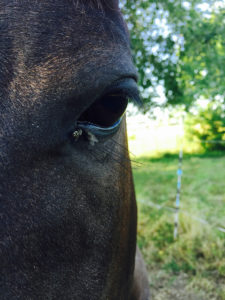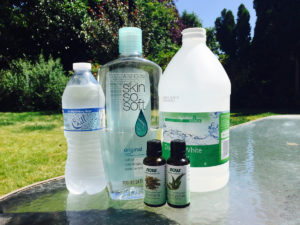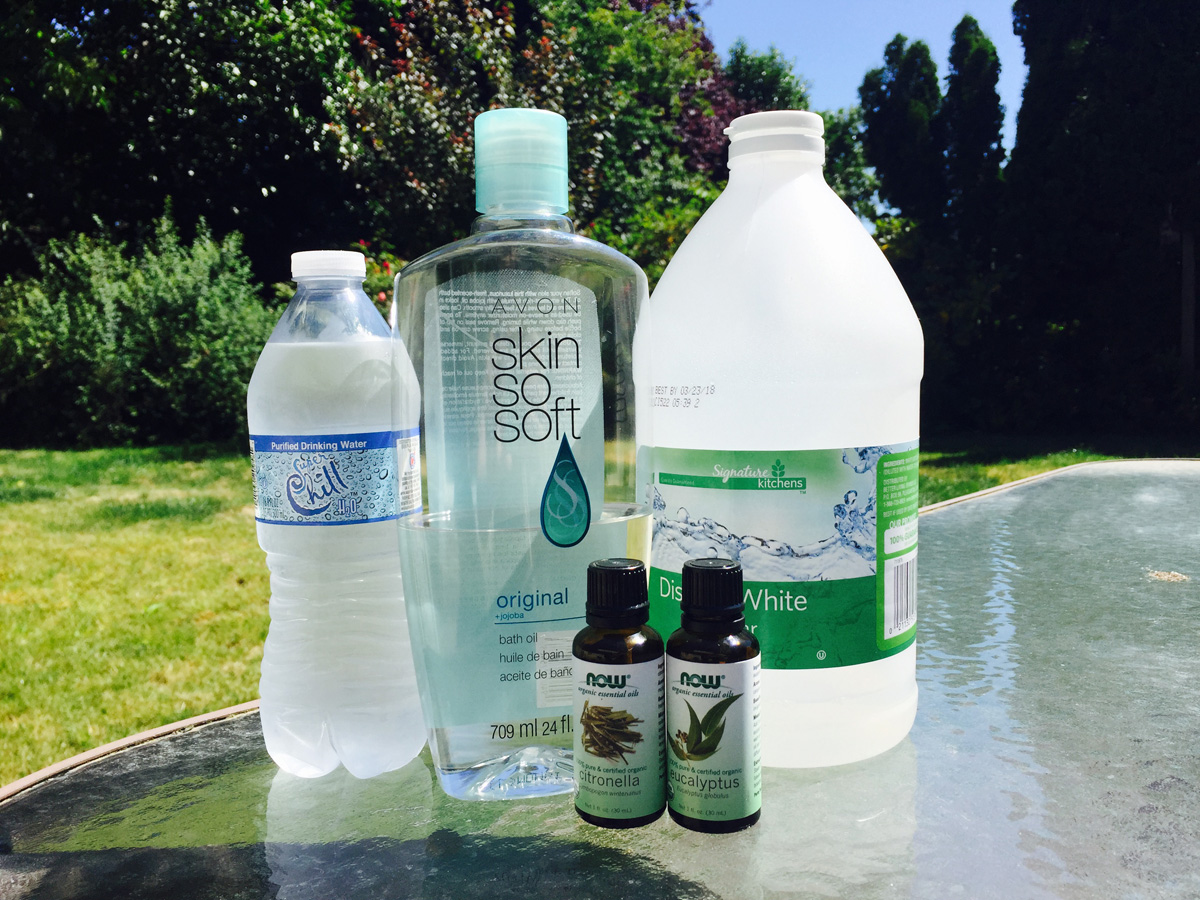by Theresa Rice
We’ve traded the muddy season for fly season. I’m not sure which I dislike more, I think fly season. I’ve seen several posts on Pinterest about homemade fly spray and wondered about their effectiveness. I am a Pyranha fly spray devotee and not a huge do-it-yourselfer, but I thought I’d give the make-at-home fly spray a try.

I chose a recipe off Pinterest that uses Avon’s Skin So Soft as a base and ordered up a couple bottles from my local Avon lady. The recipe is 1 cup Skin So Soft bath oil, 2 cups white vinegar, 1/3 cup of water, and 1 tablespoon eucalyptus oil or citronella oil. I created two different versions, one using the citronella oil and one using the eucalyptus oil.
In an attempt to find out which was more effective, I put soft cat food on four plates — one sprayed with the Pyranha fly spray, one with the citronella recipe, one with the eucalyptus recipe, and one without any spray. My little science experiment was largely an exercise in frustration as the wind tipped the plates over and knocked the food on the ground and I had to keep the cat and the dog from eating the experiment food. However, I did manage to observe that the flies would only land on the food that had not been associated with any spray, even after three hours. From my feeble attempt at the scientific method, it seemed that all the sprays worked equally well. I also performed a similar observation with the sprays applied to my horse. Flies would land briefly on the Pyrhana sprayed area but then take off a few seconds later; they would not linger. I did not see any flies land on the eucalyptus or citronella areas.
The Pyrhana fly spray runs about $17.99 per 32-ounce bottle. The above recipe that I followed creates a little over 26 ounces, with a cost of $9.89 per batch (I paid $24 for two bottles of Skin So Soft, $7.12 for the white vinegar and $9.99 for the oil). Although the homemade recipe ended up costing less (35¢ per ounce versus 59¢ per ounce of the Pyranha), I was surprised it wasn’t a more significant savings.

If you’ve never bothered much with using fly sprays or other control measures, you might consider that flies aren’t just an annoyance — they can also cause illness and allergic reactions in horses. Flies that spend time in and around barns and pastures lay their eggs in decaying organic material and manure. An adult female stable fly can lay clusters of 50 eggs at a time and does this multiple times in her 20-day lifespan, creating up to 1000 eggs. You can keep fly populations down by keeping manure picked up from stalls, turnouts, and pastures.
Fly spray isn’t just good for the typical house and stable flies you might think of in the barn. It can also work to repel gnats and no-see-ums, whose bites can cause an itchy dermatitis reaction in horses. But be careful not to soak your horse’s hair in the spray, as it can scald their skin. I learned that hard lesson last year when trying to ensure there was plenty of fly spray on my horse’s coat to keep the insects at bay. On top of the bald patch my gelding had rubbed from the itching of the bites, he then ended up with raw patches of skin from where I sprayed the Pyranha fly spray too close to his coat. When using the essential oils, keep in mind they should always be diluted, as putting undiluted essential oils on your horse’s coat with the notion that more is better, can also cause skin irritation.
Ultimately if you have the time to make the homemade spray it is worth it, as it appears to be just as effective as the store bought fly spray at repelling flies and almost half the cost. Like so many factors, your region and the type of flies you are working against will play a role in what fly spray is most effective for your barn.
Sources:
Disease in horses: http://livestockvetento.tamu.edu/insectspests/stable-fly/

Theresa grew up riding horses off and on throughout her life, finally fulfilling her dream of horse ownership in 2012. She is currently working on her first novel, inspired by her time spent working on a guest ranch in Arizona where she met her husband. They married in 2012. When not writing, you can find her riding her half-Arabian gelding, Gangster, or chasing after her two German Shepherds. website: www.sassinboots.com







Look forward to your novel.